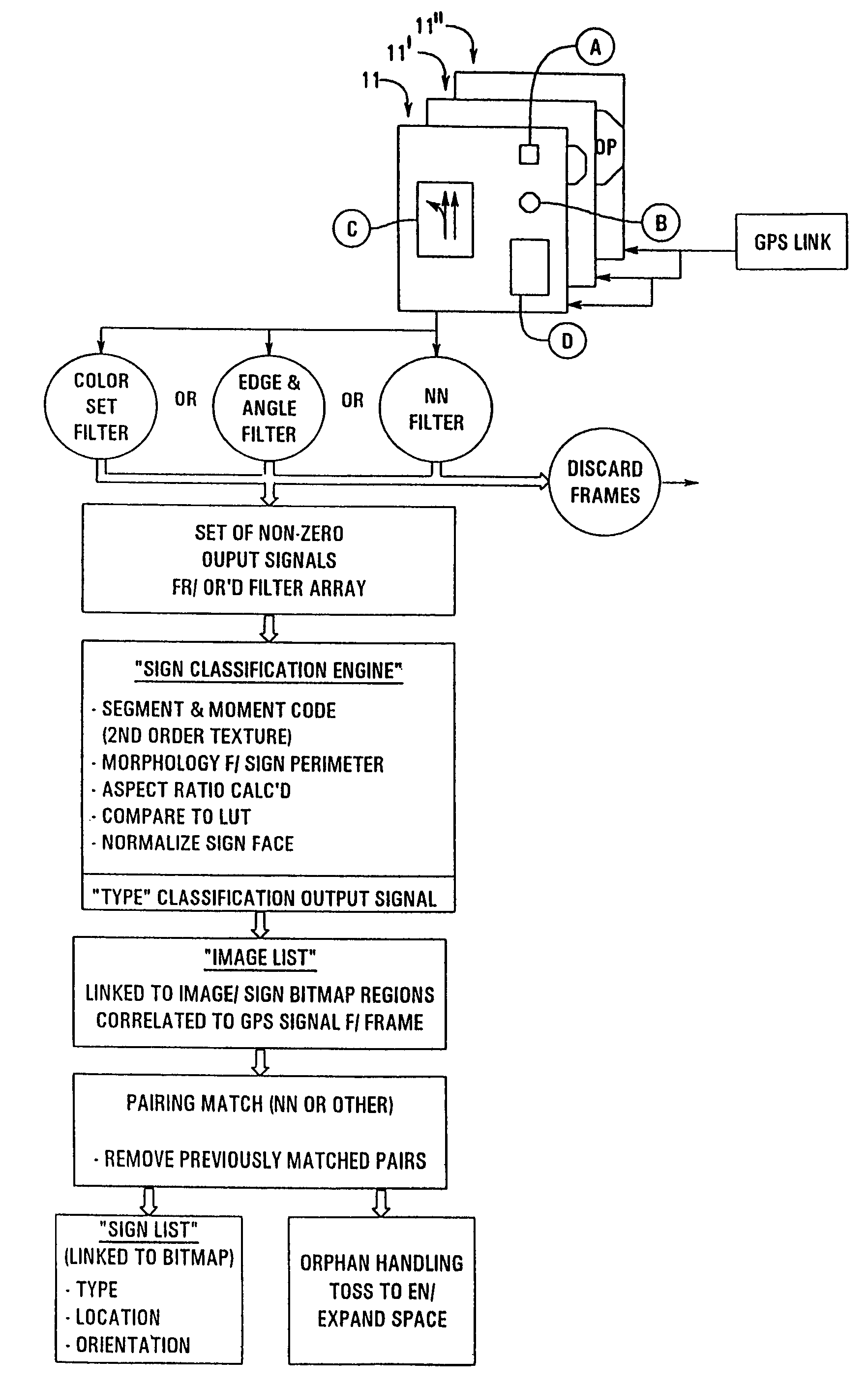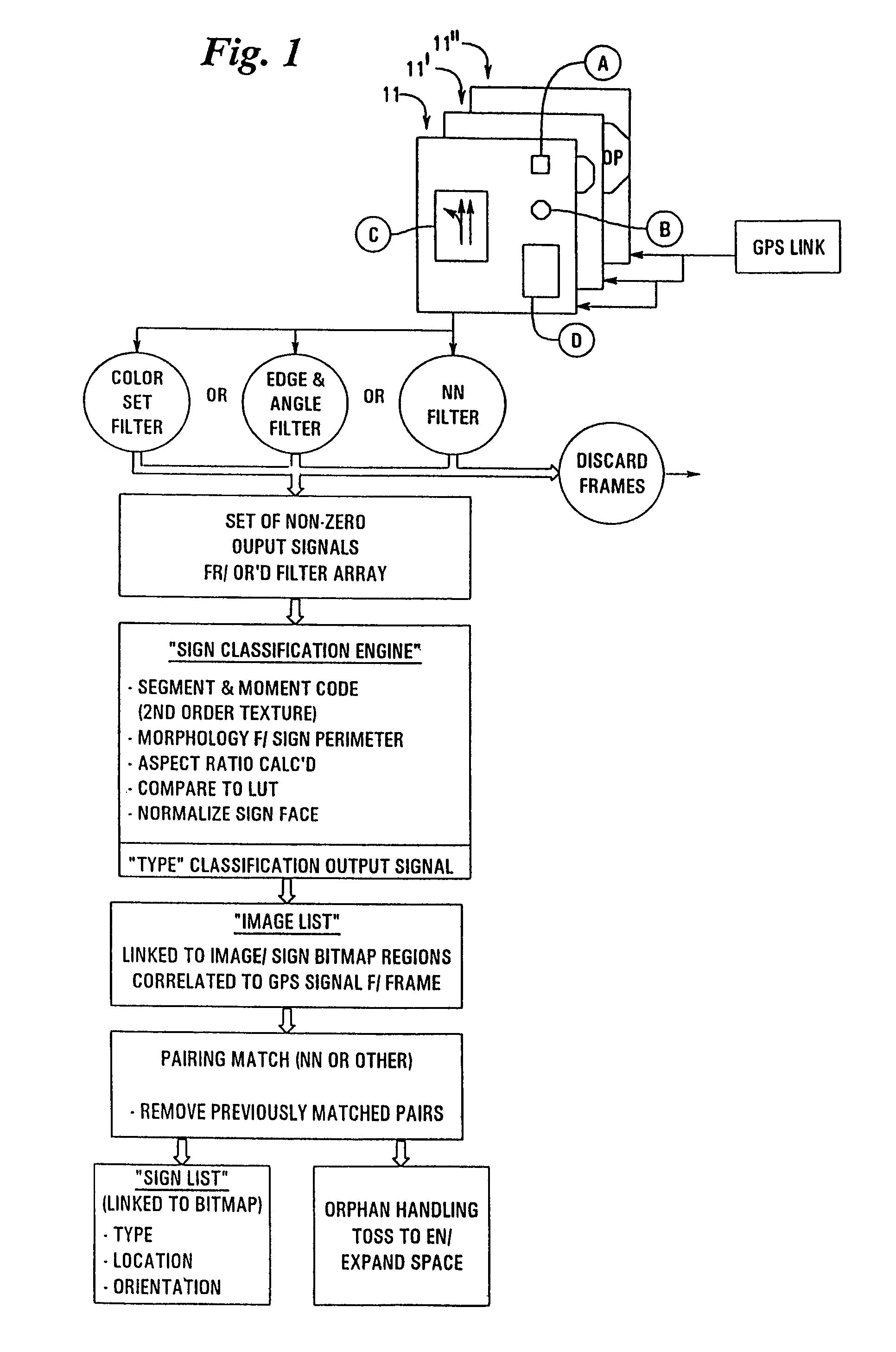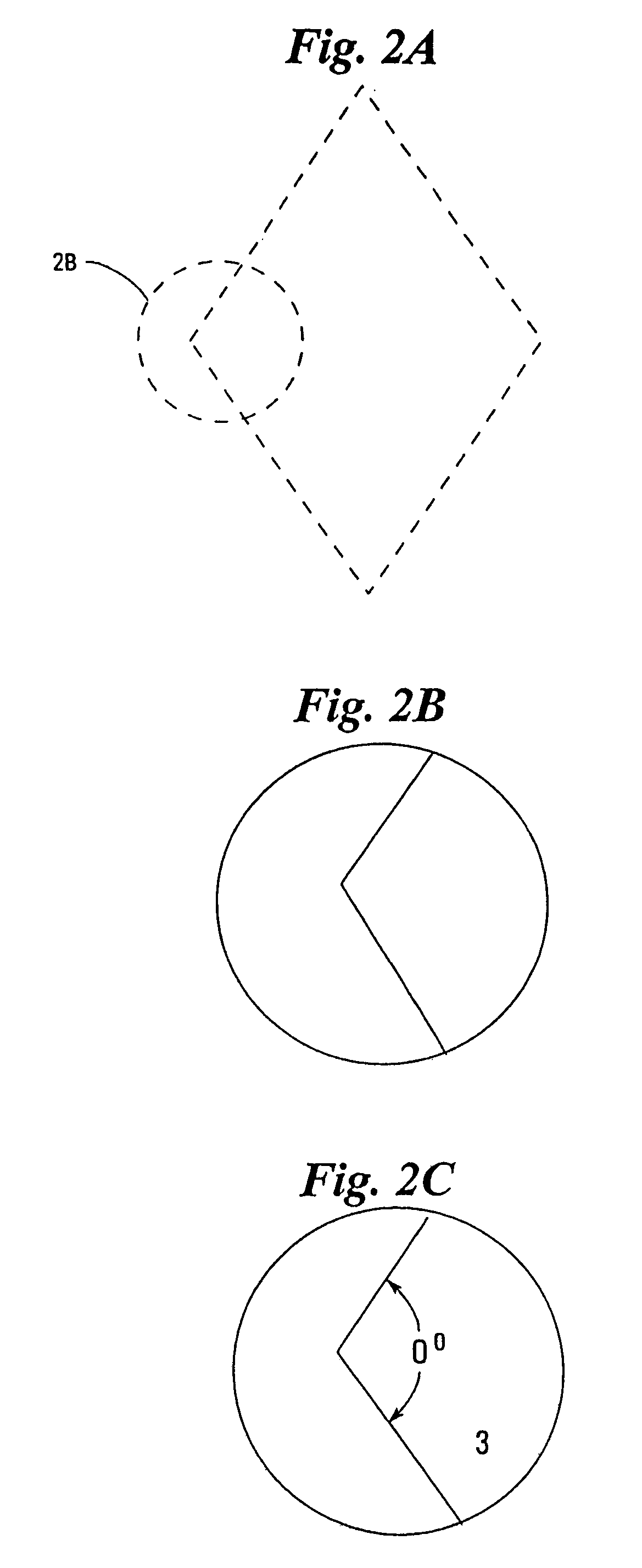Method and apparatus for identifying objects depicted in a videostream
a videostream and object technology, applied in image enhancement, signalling systems, instruments, etc., to achieve the effect of quick and accurate recognition, classification and positioning
- Summary
- Abstract
- Description
- Claims
- Application Information
AI Technical Summary
Benefits of technology
Problems solved by technology
Method used
Image
Examples
example 1
[0063]A method of recognizing and determining the location of at least one of a variety of road signs from at least two image frames depicting at least one road sign wherein available known values regarding the location, orientation, and focal length of an image capture device which originally recorded the at least two image frames, comprising the steps of:
[0064]receiving at least two image frames that each depict at least a single common road sign and which correspond to an identifier tag including at least a one of the following items: camera number, frame number, camera location coordinates, or camera orientation;
[0065]applying a fuzzy logic color filter to said at least two image frames;
[0066]filtering out and saving image frame portions containing each region that contain at least one pre-selected color-pair of a pair-set of approved road sign colors; and
[0067]saving to a memory location said image frame portions of the at least a single common road sign depicted in one of said...
example 2
[0068]An method for recognizing an object and classifying it by type, location, and visual condition from a digitized video segment of image frames comprising the steps of:
[0069]applying two filters to an image frame wherein the two filters each capture at least one differentiable characteristic of the object of interest;
[0070]extracting a first data set and a second data set from said two filters;
[0071]comparing said first data set and said second data set to threshold values;
[0072]discarding said image frame if the first or second data set do not exceed the threshold and
[0073]adding said image frame to an image frame library of possible images depicting actual objects.
example 3
[0074]A method for identifying similar objects depicted in at least two bitmap frame buffers of a digital processor, comprising the steps of:
[0075]receiving a digital image frame that corresponds to a unique camera, a camera location, an image frame reference value;
[0076]applying a set of equally weighted filters to said image frame wherein each of said equally weighted filters each creates an output signal adjusted to reflect the magnitude of a different differentiable characteristic of an object of interest;
[0077]OR-ing the resulting output signals from each of the equally weighted filters and saving only those image frames in which at least one of the equally weighted filters produces the output signal having a local maximum value.
PUM
 Login to View More
Login to View More Abstract
Description
Claims
Application Information
 Login to View More
Login to View More - R&D
- Intellectual Property
- Life Sciences
- Materials
- Tech Scout
- Unparalleled Data Quality
- Higher Quality Content
- 60% Fewer Hallucinations
Browse by: Latest US Patents, China's latest patents, Technical Efficacy Thesaurus, Application Domain, Technology Topic, Popular Technical Reports.
© 2025 PatSnap. All rights reserved.Legal|Privacy policy|Modern Slavery Act Transparency Statement|Sitemap|About US| Contact US: help@patsnap.com



